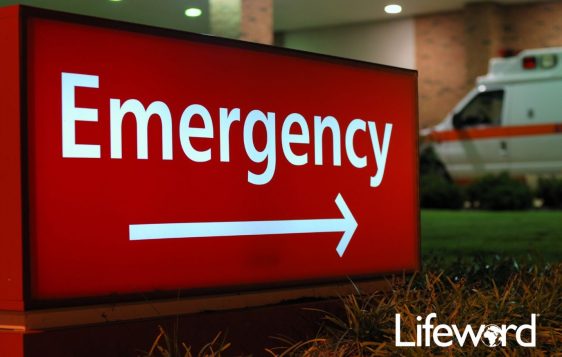Blog

It was my freshman year of college—mid-November. Over the weekend, I felt a bit sick, but nothing too serious—just your common stuffy nose, sore throat, and body aches. By Monday morning, I was mostly better, so I got up to get ready for school. At this point, I didn’t have my own car yet, so my dad dropped me off. As he pulled into the parking lot at Central Baptist College, an uncomfortable sharpness developed in my stomach. I thought it was a leftover symptom from my sickness, so I didn’t bring it up.
I sat through my first class in extreme discomfort. I could barely focus on the teacher or on taking notes. By the time I went to my second class, the pain was so bad I was getting nauseous. Halfway through class, I got up and hurried to the bathroom, where I sat on the stall floor in front of the toilet, sure I was going to throw up. I didn’t, but the pain didn’t get any better. Eventually, I realized I was just going to have to move on, and I returned to class since I had left my backpack and other belongings at my desk.
I knew I had to go home; there was no way I could get through another class. I called my dad and told him I needed to go home. He said, “Won’t you miss your next class?” I told him it didn’t matter—I was in too much pain. So my dad took me home and asked if I needed to go to the hospital. I said no; I just needed rest. I got in bed, but the pain kept getting worse. Finally, I called my dad and told him I did need to go to the hospital. At that point, I could barely stand. My parents put down all the back seats in their minivan and let me lie on the floor as they drove me to the hospital, cradling a trash can in case I threw up. When we arrived at the emergency room, I climbed out of the van, but the pain was too much—I threw up in the bushes.
By the end of the first couple of hours in the waiting room, they had drawn some blood (which didn’t come easily—they had to try three times on each arm because I was dehydrated from being sick). After that, it was several more hours of waiting. During that time, my pain actually went away, but I decided to stay as a precaution. They eventually took me back to a room, and after that, my memory of the evening blurs together. They did an X-ray, determined that I had appendicitis, and got me scheduled for surgery—all in the same evening. By the end of the night, the surgery was over, and I was even allowed to go home.
That was the worst I’ve ever felt. And although I was fortunate to receive quick medical help, this wasn’t something people always had access to back in the days of Jesus. The writer of the Gospel of Luke was actually a physician, so many of the stories he shares include more precise medical detail than the other Gospels. Luke 4:31–44 is no exception.
As Jesus was teaching on the Sabbath, a demon-possessed man interrupted Him and called Jesus “the Holy One of God.” Jesus rebuked this demon because the way he proclaimed it was wrong—disruptively, possibly sarcastically, and at the wrong time. Without difficulty, He cast out the demon (and we see Him do the same with others shortly after). This act astonished the people watching as they saw His authority.
After the service on the Sabbath, He entered the house of Simon Peter. We don’t see Him call Peter as a follower until the next chapter. Luke sometimes wrote important events out of chronological order, so Simon had likely already been called (though we don’t see his calling until later). Jesus found Peter’s mother-in-law sick. Other passages tell us about her illness, but only Luke tells us that she had a high fever. Jesus stood over her and rebuked the fever—He spoke to it just as He did the demon—and she was instantly healed. Peter’s mother-in-law got up immediately and began to serve them. As if she had never been sick at all, she got right to work.
Jesus spent the rest of the night healing many people. The next morning, He went out into a private place for solitude. Even Jesus needed alone time to recuperate. Mark 1:35 tells us specifically that He spent that time praying. The people of Capernaum tried to follow Him, but Jesus told them that He had to minister elsewhere also.
We can take examples from Simon’s mother-in-law—for her service to Jesus—and from Jesus Himself—for finding time for prayer. And we can be grateful that Jesus is our Great Physician, who understands our bodies and health needs even more deeply than the most learned doctor, and that, most importantly, He provides healing for the greatest ailment of the human condition: the inclination toward sin we are all born with. Because He died and rose again to break the curse of sin and death, we can all be healed through faith in Him.
Copyright © 2025 Lifeword.org. All rights reserved. No part of this article may be reproduced or reprinted without permission in writing from Lifeword.org

